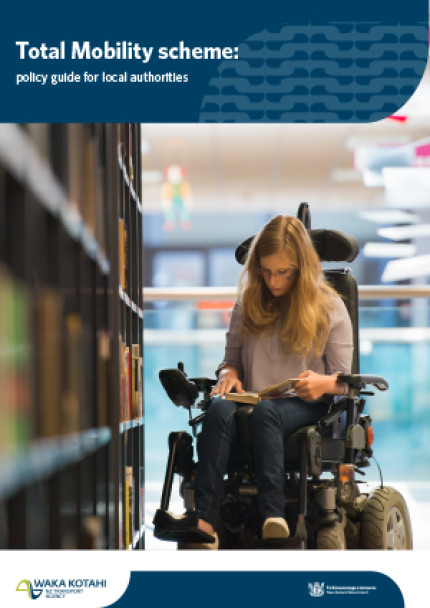The purpose of this policy guide is to achieve a nationally consistent approach for local authorities to administer the Total Mobility scheme in their respective regions.
This guide sets out the requirements, policy, principles, processes and explanatory notes to manage the Total Mobility scheme.
About Total Mobility
Funded in partnership by local and central government, the Total Mobility scheme assists eligible people, with long term impairments to access appropriate transport to meet their daily needs and enhance their community participation. This assistance is provided in the form of subsidised door to door transport services wherever scheme transport providers operate.
The Total Mobility scheme is intended to complement the provision of public transport services, which are expected to be as accessible as possible to meet different mobility needs.
Waka Kotahi NZ Transport Agency first published a policy guide for local authorities in 2008 and a user guide in 2010.
For the user guide:
Total Mobility around New Zealand: a regional guide to using the Total Mobility scheme

The Total Mobility scheme provides a subsidised taxi service to people with serious mobility constraints by way of taxi vouchers that provide a discount of 50 percent off the normal taxi fare. It also provides funding to help purchase and install wheelchair hoists in taxi vans. The scheme is funded in partnership by local and central government. Local government (usually regional councils) manage and operate the scheme in most regions.
The provision of the scheme is consistent with the Land Transport Management Act 2003, which requires local government to consider the needs of transport-disadvantaged people when preparing any land transport programme.
The NZTS was released in 2002 and outlines the government's five key objectives for transport. Improving access and mobility is one of these objectives. The NZTS included an undertaking by the government to review and reform the Total Mobility scheme.
Transfund New Zealand (now Land Transport NZ) undertook an initial review of the scheme in 2002 as part of the Passenger Transport Social Services Review. The findings (Transfund New Zealand, 2003) identified the following key concerns with the scheme:
The Ministry of Transport led the second stage of the review in 2005. This stage sought to:
The following key recommendations were made in the Ministry of Transport's 2005 review and agreed to by government:
Purpose
Eligibility
Entitlement
Assessment
Transport operators
Increase in government funding